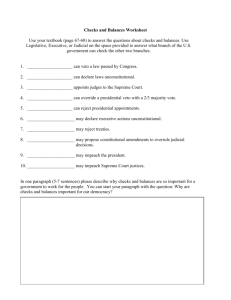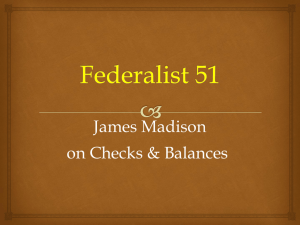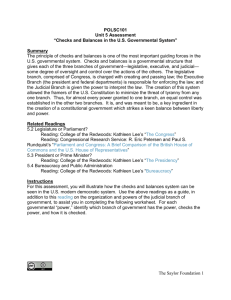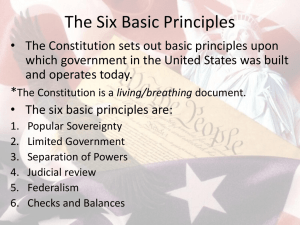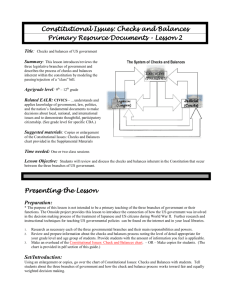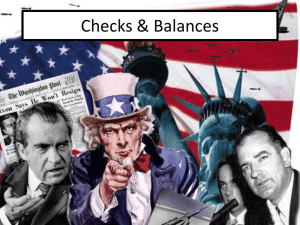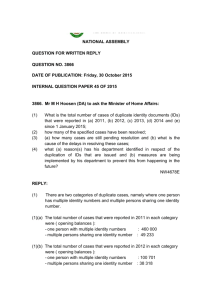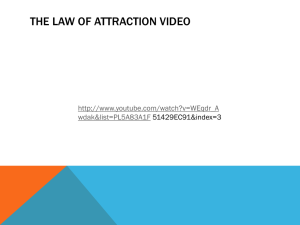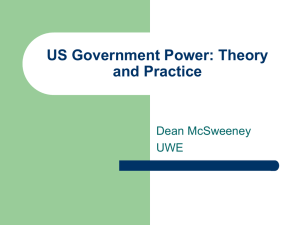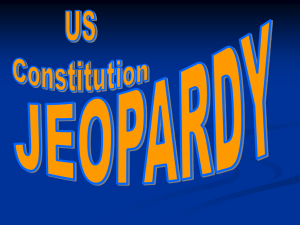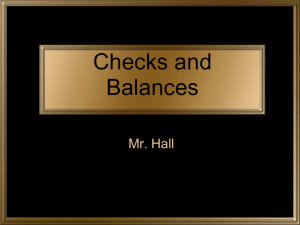Checks and Balances
advertisement
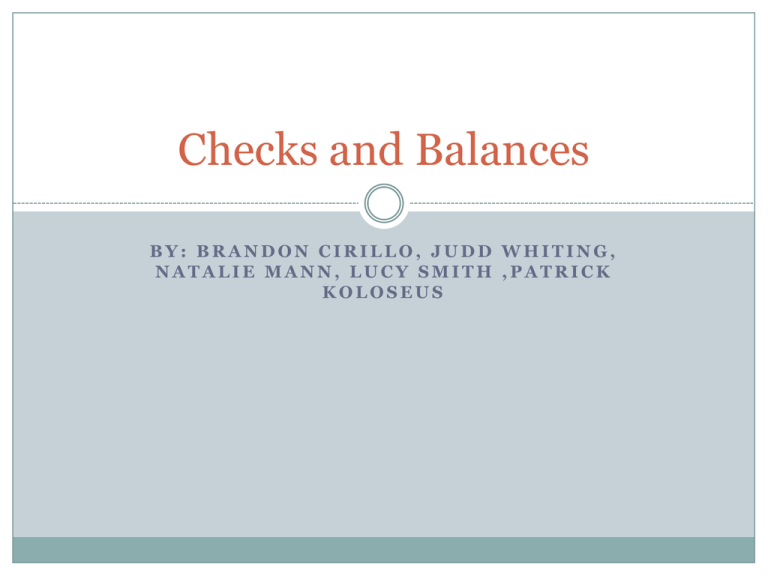
Checks and Balances BY: BRANDON CIRILLO, JUDD WHITING, NATALIE MANN, LUCY SMITH ,PATRICK KOLOSEUS What are Checks and Balances? The checks and balances are a system in the united states government where there are three sections, legislative: makes laws, judicial: upholds laws, and executive: approves laws. The system also works to have each section of the government keep each other in line and prevent any one section from having too much control over the others. Each branch has one or two ways of controlling the others Checks and Balances in the Constitution What the constitution basically says is stated above The many powers of each section are given by the constitution like the ones from Article 1 “The house of representatives shall choose their speaker and other officers and shall have the sole power of impeachment” section 3.6 “senate shall have sole power to try all impeachments the chief justice shall persuade no conviction concurrence of two thirds members present.” section 6.2 “no senator or representative shall be appointed to any civil office of the united states nor any person holding office will be a member of congress during the time Checks and balances in the Constitution part two Article two checks and balances “the President/ Vice President and all civil offices of the us shall be removed from office on impeachment for in conviction of treason bribery and other high crimes and misdemeanors.” Article three “the judicial power shall extend to all cases, laws and treaties arising under the constitution between anyone or any groups with in the U.S.” Examples of Checks and Balances in the U.S. Checks and balances are used all the time like during the attempted impeachment of Bill Clinton where the following acts were committed, “The president provided perjuries, false and misleading testimony to the grand jury regarding the Paula Jones case and his relationship with Monica Lewinsky.” Second reason of impeachment “The president obstructed justice in an effort to delay, impede, cover up and conceal the existence of evidence related to the Jones case.” and the case was shown to the house of representatives where they did not get enough votes to impeach Bill Clinton. Checks and Balances at work continued Congress and the President can act to overturn a Supreme Court ruling. President Obama signs into law the Lilly Ledbetter Fair Pay Act of 2009.- This new law effectively overturns the Supreme Court’s infamous 2007 ruling against Ms. Ledbetter in Ledbetter v. Goodyear Tire & Rubber Co., a ruling that made it much harder for workers who have been victims of unlawful pay discrimination to obtain compensation for that discrimination. .The Supreme Court took that verdict away, holding that Ms. Ledbetter had sued too late. -They held that Ms. Ledbetter should have sued when the discriminatory compensation decisions were first made. Court’s ruling concerned the interpretation of a law passed by Congress, Congress had the power to pass a new law essentially correcting the Court’s misinterpretation of the original statute and effectively overturning the decision. citation http://theusconstitution.org/text-history/485 http://www.washingtonpost.com/wp- srv/politics/special/clinton/stories/articles122098.h tm
